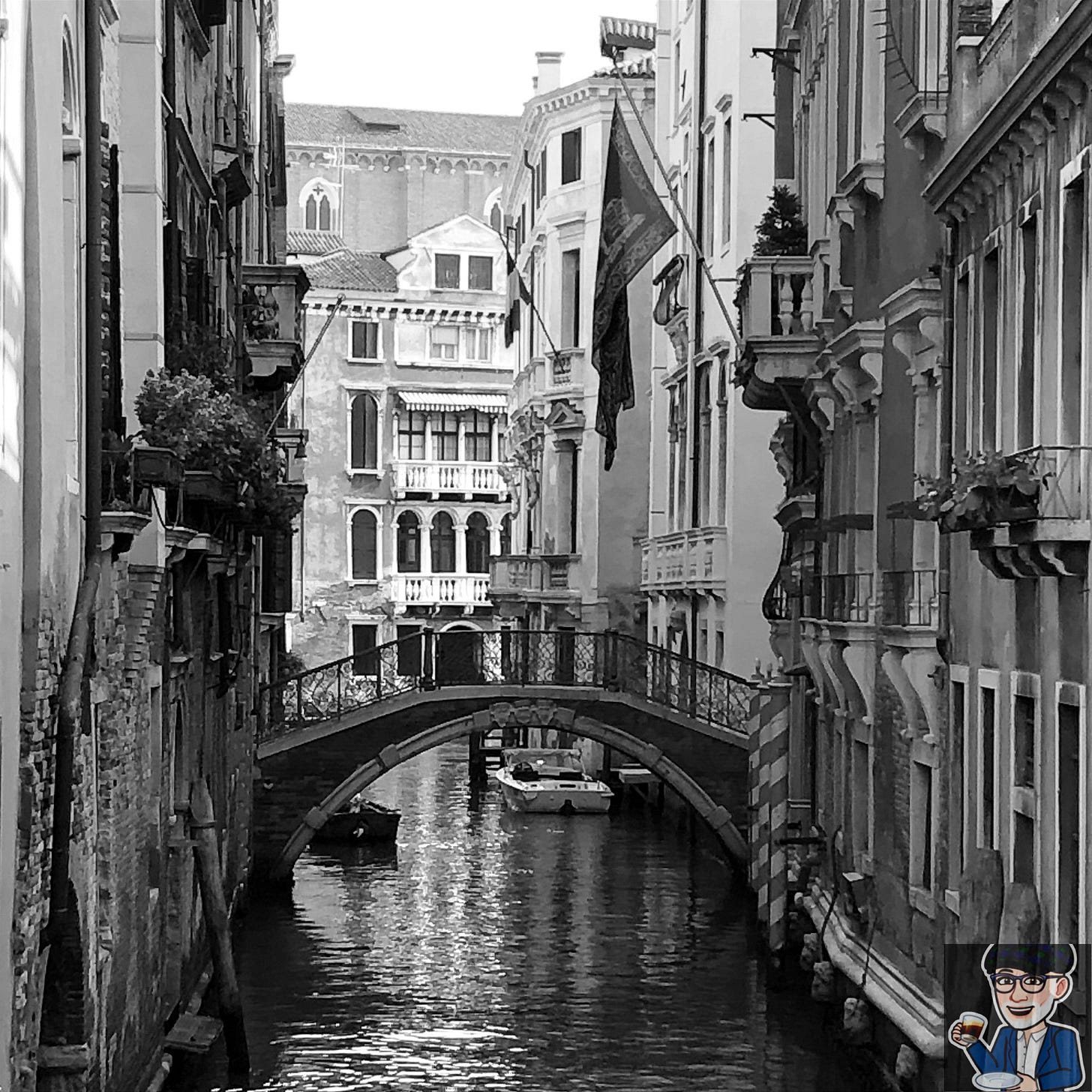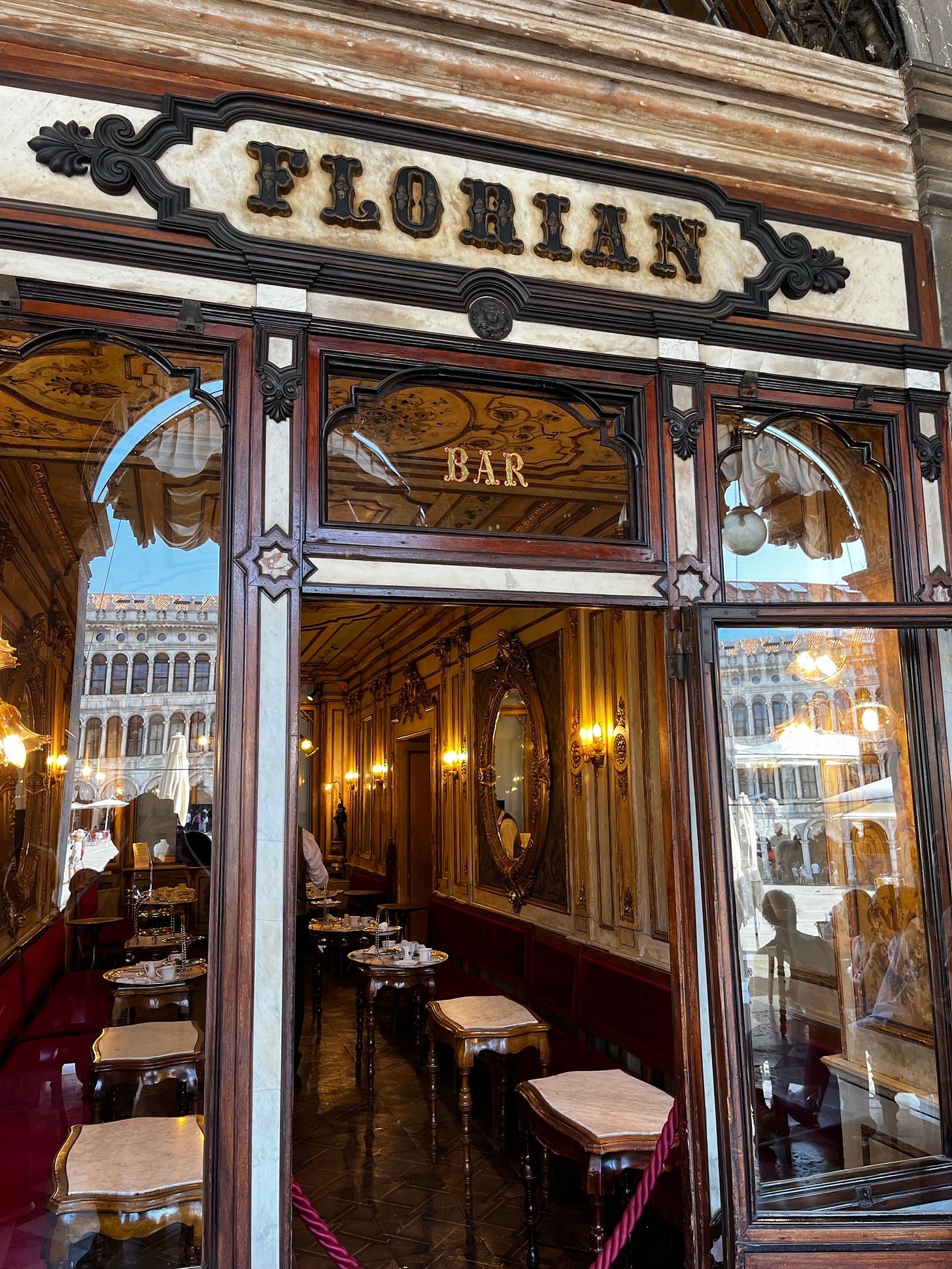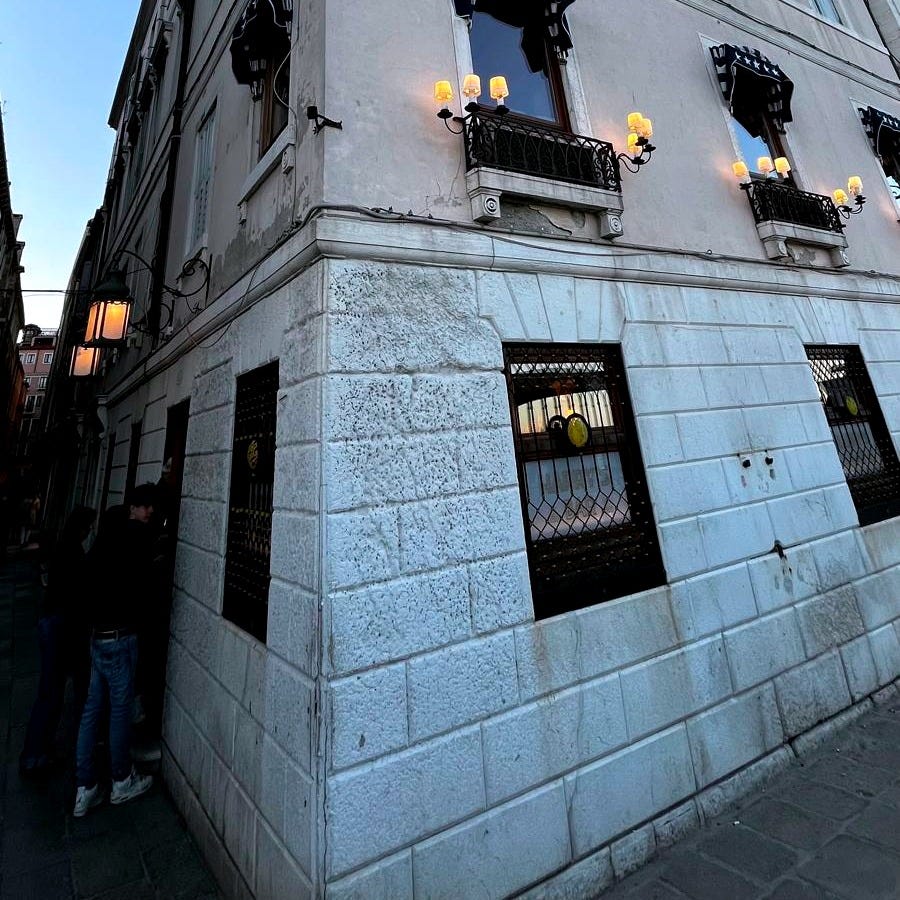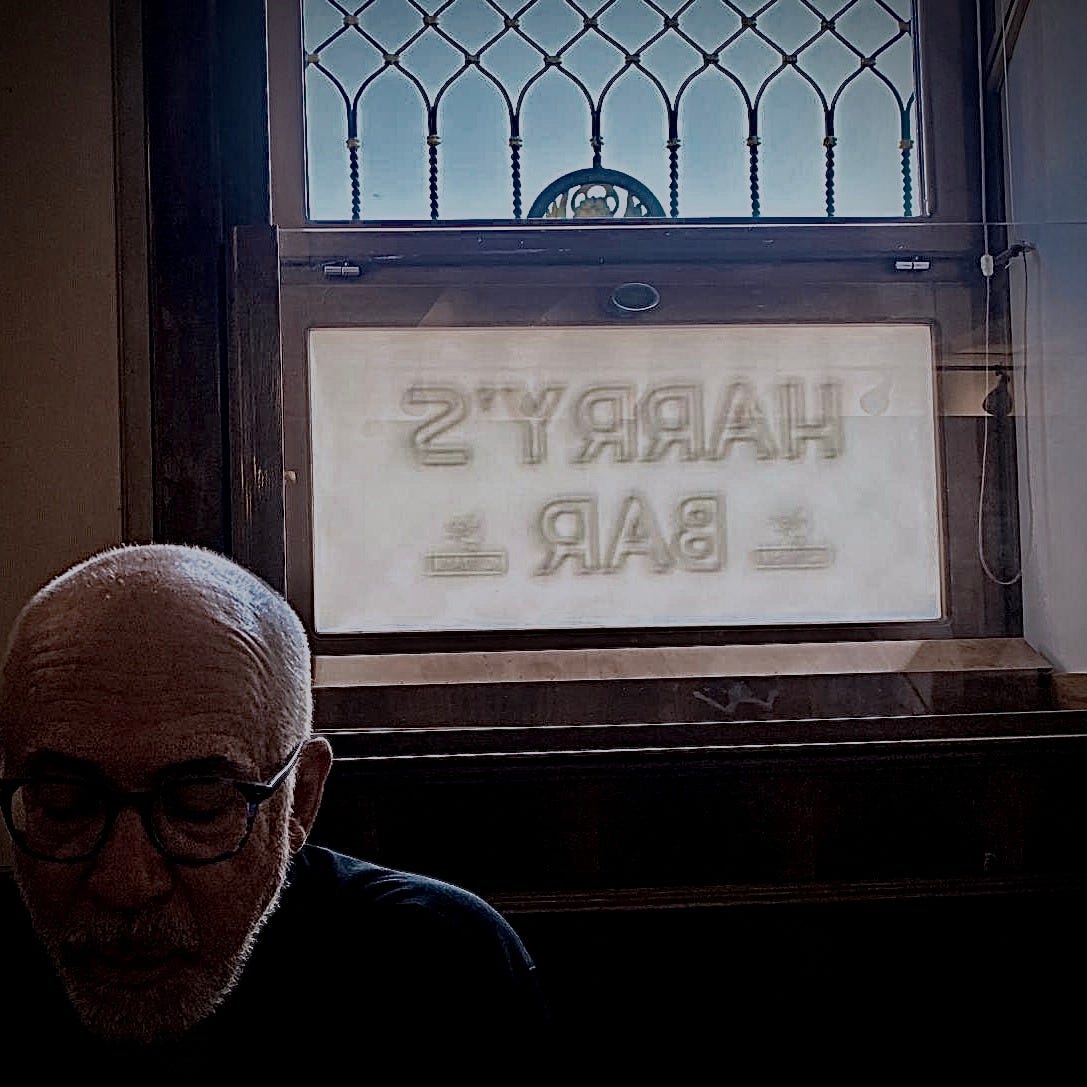“We’ll go to Harry’s Bar now and have two dry martinis,” the Colonel said. A passage from Ernest Hemingway’s novel, “Across the River and Into the Trees”.
My girlfriend Emi and I drove from Colle Val d’Elsa to Venice, eager to immerse ourselves in the world’s most prestigious cultural event: the Venice Biennale. This year’s theme especially intrigued me—“STRANIERI OVUNQUE—STRANGERS EVERYWHERE.”
Our plan was to head straight to Venice and begin our visit to the art exhibition in the mid-afternoon. However, upon reaching the city of Padua around 1:00, we decided to stop for lunch—in Italy, you don’t rush a meal in a fast-food joint. We leisurely extended il pranzo for a while and reached the San Marco garage structure along the Venetian shore around 3:15. A short traghetto ride on the Grand Canal brought us near our hotel, and after checking in, we swiftly made our way through the narrow winding streets, hoping to catch a few hours at the Arsenale di Venezia before it closed. That’s when Emi suddenly stopped, turned to me, and said, “Why don’t we just enjoy Venice this afternoon instead of rushing? Tomorrow, we can dedicate the entire day to the Biennale.” I loved the idea. One of my favorite things to do in Venice is getting lost in its alleys, crossing countless bridges that lead to unexpected dead ends. The Biennale could wait.
We wandered through Piazza San Marco, a place that never loses its magic, passing the iconic Florian Bar with its terrace where an orchestra of five musicians was playing a version of “Por Una Cabeza” from the movie “Scent of a Woman.” We walked past the Campanile of San Marco, where I would usually turn left to reach the Chiesa della Pietà, where Antonio Vivaldi spent much of his life. Vivaldi’s music has always been sublime to me. But reaching the waterfront, I suggested, “Let’s turn right and grab a drink at Harry’s Bar.”
A few steps later, we arrived at the unpretentious entrance of Harry’s Bar. This isn’t the typical Italian coffee bar where I regularly write my newsletters—this is a bar for cocktails. What makes it special are the legends who frequented it in the 1950s. Orson Welles, Truman Capote, Peggy Guggenheim, and, of course, Ernest Hemingway were among its patrons.
Upon entering, I was surprised by how small the space was—I had expected something grander, with more tables. We weren’t greeted, so we found ourselves a round mahogany table near the well-stocked bar. A young bartender was chatting with a waitress, her hair in a ponytail, both dressed smartly in fitted white jackets, white shirts, and black trousers. The bartender wore a white bow tie, and the waitress had a black one. Nearby, a tall German man sat with his three young daughters. While the girls sipped on Coke, he and half of the other patrons enjoyed Bellinis—the drink made famous by the celebrities. I doubted he was here for his daughters; more likely, he was ticking Harry’s Bar off his bucket list, lured by its storied reputation.
It quickly became apparent that the bar’s fame comes not from its ambiance but from the legendary clientele who once frequented it. The bar itself, though rich in history, was fairly ordinary, and we weren’t particularly impressed.
Tired of waiting, we finally caught the attention of a waiter and ordered two dry martinis—Hemingway-style, and also my favorite 5 o’clock drink. The service was uninspiring; the waiters seemed indifferent, as if the bar’s reputation alone should be enough to satisfy us. Perhaps, for many, it is.
I was surprised when the martinis arrived in small, cylindrical glasses—not the typical V-shaped martini glass. The olives were served separately in a white dish. Things didn’t seem to be going well, and this unusual presentation added to my initial disappointment. We cheered and took a sip. And then, unexpectedly, something magical happened. Emi and I exchanged a look of satisfaction—this was the best vodka martini I had ever tasted, even better than the ones I make myself! Premium vodka, just a few drops of extra-dry Martini, perfectly balanced. A few sips in, and we were already feeling the pleasant effects. Suddenly, we began to enjoy the place—perhaps it was just the martini working its magic.
With a nice buzz setting in, we were tempted to have another round but not at 25 euros a glass. We set off in search of a place for our next drink, weaving through the narrow streets and crossing the bridges—up, down, and over one canal after another.
Crossing a quiet backstreet in the Castello district, I couldn’t help but stop to observe freshly washed clothes fluttering in the sun between windows of two homes. A reminder that beyond the city’s famed canals, Venetians live normal lives, which we can’t imagine from the front side of the street.
We stopped by a little bar on Calle de la Rasse, and the bartender didn’t even know what a vodka martini was, so we left. A little farther along, on Via Garibaldi, we asked a waiter if they served vodka martinis. He confidently said they did, so we sat down, only to find out they used Martini vermouth instead of dry Martini. We left the drinks, almost untouched, paid the bill, and continued our search. Up bridges, down canals, hitting dead ends, we finally found ourselves at Basegone bar. This time, they got the ingredients right but botched the proportions—the drink tasted more of Martini than vodka.
“Should we go back to Harry’s?” Emi whispered. We continued crossing bridges, wandering through canals and shadowy passageways. We paused in front of a weathered house at the water’s edge, its stone steps covered in algae, half-submerged, leading to a heavy wooden door. The decaying beauty of the place was accentuated by hanging pots of blooming flowers, glowing in the late afternoon sun.
And then, we spotted the Harry’s Bar sign once again. Ernest was winking at us, and how could we resist his invitation?
Arrivederci until next Saturday—always observing, always sharing, always sipping, always a tale from an Italian coffee bar and beyond.
















Je viens de découvrir ce qu’est un Bellini cocktail! Très bon article, tu réussis bien à nous faire sentir l’atmosphère. 🍸
Ton titre aurait du être : Venice with a Hemingway wink and a good martini.
J’aime particulièrement la photo ou nous voyons le mur d’une maison qui sombre dans l’eau.